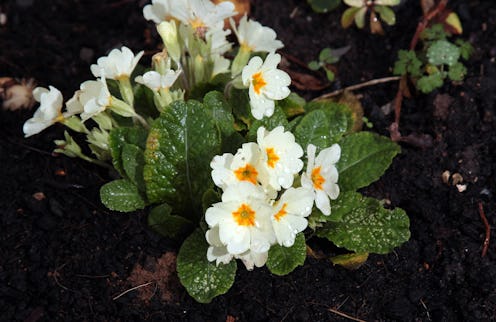Style
Why Evening Primrose Oil Might Help With Your Acne

If you're a skin care fanatic, you may have come across evening primrose oil in your search for products to help with hormonal acne. If you have never heard of it before and think it sounds like some sort of magical potion, you're not entirely incorrect. Evening primrose oil is an oil that is made from the seed of the evening primrose oil plant and is widely used to treat skin issues like eczema, psoriasis, and yes, dreaded acne.
I have been having an affair with hormonal acne for over 15 years. As a teen, I used topical treatments to eliminate the appearance of pimples which showed limited results My acne stabilized somewhat in college thanks to birth control. Honestly, I look back at pictures of me in college and feel jealous of how consistently clear my skin was. I would hate that girl with the even skin tone and big smile if she wasn't so adorable. Eventually, the negative side-effects of birth control outweighed the positive and I had to say goodbye to my perfect skin.
Turns out, the reason many topical spot treatments and anti-breakout cleansers don't work is because they're not treating your hormonal imbalance. I've mentioned before that I prefer a natural spot treatment to avoid potential dryness. Fortunately, I can turn to nature to help keep my skin looking flawless.
Through many science experiments in my bathroom, I've found that tea tree oil isn't the only player in spot treatments. Evening primrose oil is as sexy as it sounds. According to dermatologist Dr. Shari Sperling, DO, evening primrose oil "contains fatty acids, which contribute to overall skin health. It decreases inflammation of the skin so it can be used for eczema and acne," she tells Bustle.
Our body doesn't naturally produce these fatty acids — they can only be derived from plant oil. This particular version is really gentle, making skin irritation rare, and also contains tons of vitamin E and vitamin C, which are both essential to keep skin looking and feeling youthful.
Organic Evening Primrose Oil, $10, Amazon
Long ago, primrose oil was used by Native Americas to treat hemorrhoids, stomach aches, sore throats and bruising. These days it's used in high-end face serums and cleansers because of its anti-inflammatory and healing properties. It was actually Fresh's skincare line that turned me on to primrose oil — they love putting the stuff in a lot of their products.
Use capsules or purchase evening primrose oil to try out some of my favorite recipes below.
Eye Serum
"You can use primrose oil as an undereye treatment," Sperling tells Bustle. "It helps reduce irritation and dryness, and it keeps the skin moisturized," she adds. But proceed with caution: Sperling always suggests testing product first in a small area to make sure you don’t have an allergy to the oil.
I have certainly reaped the benefits of using grape seed oil under my eyes to eliminate bagginess and dark circles especially after a night of "happy-hour-gone-wrong". Add a few drops of primrose oil to an ounce of grape seed oil and gently pat into the skin under your eyes. The anti-inflammatory properties will diminish those unsightly circles, tricking your boss into thinking you went to bed promptly at 9pm.
Hormonal Acne
Cococare Coconut Oil, $7, Amazon
"Evening primrose oil reduces inflammation, which in turn can help with acne," Sperling tells Bustle.
Once a week, I get serious about my face and give myself an anti-acne oil cleanse. I'm certainly not married to any one recipe, but my favorite always includes a "carrier oil" that my face is already familiar with. This is crucial when you are trying to treat acne because you don't want to further irritate your skin with a new ingredient.
My carrier oil for this particular cleanser is always grape seed or coconut oil, but you can use whatever suits your skin best. Liquefy your carrier oil and add equal drops of primrose and peppermint oil. The peppermint oils is an anti-septic that will cleanse your skin and the primrose will treat your hormonal imbalance. Plus, both of these are anti-inflammatory agents that will bring down redness and irritation in your skin. Rinse thoroughly and apply your moisturizer or choice oil. Be mindful that all acne oil cleansers should be used on a freshly washed face!
Nail Bed Health
This is a great trick to use underneath your base coat for your nails to protect them even further. According to Sperling, there isn’t conclusive evidence that evening primrose oil can be beneficial to nail health, however, "evening primrose oil contains omega 3 fatty acid, which contributes to healthy skin, hair, and nails," she tells Bustle.
I usually rub a dab of oil on my nails because I have been plagued with unruly ridges that no amount of buffing can get rid of. Putting a natural oil on top of your nail beds will help strengthen your nails and I've found my ridges at their best (sadly, not completely gone). Do this at least a few hours before you DIY a mani so the oil has time to soak in — otherwise, the polish won't stick.
This post was originally published on May 28, 2014. It was updated and republished on June 24, 2019. Additional reporting by Sara Tan.
This article was originally published on